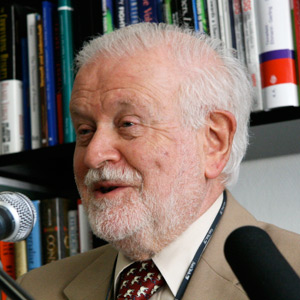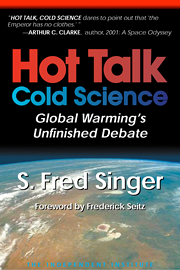The US National Academy of Sciences (NAS) just published a two-volume report on geo-engineering (Geo-Eng), invoked in order to neutralize the “threat of climate change.” Geo-Eng is a contentious topic for zealots, since it might permit continued emission of greenhouse (GH) gases like carbon dioxide (CO2). But proposed technological fixes to counteract the “danger” of global warming are not needed and are hugely expensive; their side effects could mess-up the atmosphere and also lead to much litigation. Still, small-scale tests can produce useful scientific and economic information.
This major NAS study is supported by NOAA and NASA, and also by US intelligence agencies. I suspect that the CIA has been brainwashed to believe that anthropogenic global warming (AGW) is an existential threat to the United States; if they listen to Obama and Kerry, they may have swallowed some of the Kool-Aid.
The NAS reports discuss two main approaches: (1) deposit reflecting aerosols into the stratosphere so as to keep some solar energy from reaching the surface—thus reducing warming; (2) lower the level of carbon dioxide in the atmosphere—thereby reducing any GH warming; somehow capture a goodly fraction of CO2 and bury it underground. Both projects are extremely expensive and appear completely superfluous—unless you actually believe in future climate disasters. Further, both projects carry with them important side effects that have hardly been investigated.
We look forward to a lively debate—mainly among AGW alarmists. Rigid ideologues hate geo-engineering, because it doesn’t do away with the use of fossil fuels and permits some emission of carbon dioxide. I believe such projects are a complete waste of money and effort; yet I would encourage small-scale pilot programs to get a better fix on science and technology problems, costs, and side effects. Note that mankind has been “engineering” the planet for past millennia through land use changes, agriculture, large-scale irrigation, flood control, and mining—and even more rapidly since the start of the Industrial Revolution. The term “Anthropocene” is a quite appropriate description of the current age.
Reflecting more solar energy
The idea here is to release particles into the stratosphere that reflect solar radiation, akin to particles that are injected there by natural volcanism. This is something that can certainly be done, but is it desirable or wise? From what we can tell from natural volcanism, such particles will remain in the quiet and dry stratosphere for many months, but eventually be convected into the troposphere and rain out. So by releasing sulfur dioxide or other sulfurous compounds into the stratosphere, we will create what amounts to acid rain, something that many environmentalists have warned about.
Not only that, but we have observed that particles in the stratosphere mediate enhanced destruction of the ozone layer through “heterogeneous” reactions, i.e., on the surfaces of the particles; this is the mechanism responsible for creating the Antarctic Ozone Hole (AOH) on the surfaces of polar stratospheric ice clouds. In fact, it requires both chlorine compounds and particles to achieve enhanced ozone destruction—but we don’t know where the thresholds lie. The chlorine acts on the ozone catalytically, so even in the absence of man-made freons, a little chlorine from ocean salt-spray may be sufficient to damage the ozone layer.
I would think that those who support the Montreal Protocol, created to protect the ozone layer, should object to messing around with the stratosphere. Where are all the folks from the Sierra Club, Union of Concerned Scientists, etc, who were so opposed to the construction of two SST (supersonic transports) prototypes in the 1970s? As we well know, these would not have created any detectable damage to the ozone layer.
Given a limited lifetime of the particles, they will have to be re-injected every year or so—if one really wants to counteract any possible warming from whatever cause by decreasing the amount of solar radiation hitting the earth’s surface. But solar radiation is important to life, and especially to agriculture. I doubt whether any of these secondary or tertiary effects have been fully considered by the good folks who produced the NAS report.
A similar argument applies to the use of mirrors orbiting the earth beyond the atmosphere—a favorite scheme for science writers—and fun to speculate on.
A lower-risk alternative to stratospheric particles, but requiring much testing, is to increase cloudiness, thus enhancing reflection of sunlight. Ocean-going vessels would spray water mist into the atmosphere, creating condensation nuclei for cloud droplets.
Capturing CO2
The other method proposed in the report is to capture atmospheric CO2 to counteract its increase from the burning of fossil fuels. [The NAS report mentions other techniques for pulling carbon from the atmosphere, including something as straightforward as massive tree-plantations. A less conventional method that might be implemented is “ocean fertilization” by boosting the supply of trace elements like iron; it may work, but involves some risk to ocean ecology.]
I am curious to see the cost figures that go with the proposed removal of atmospheric CO2. Let’s recall that the EPA required coal-fired power plants to collect CO2 at the smoke stacks, where it is highly concentrated—and then bury it underground. This EPA program has not yet been successful. It may never be successful; even the pilot projects are failing, and the total costs of such an enterprise are not known.
By comparison, capturing CO2 from the atmosphere, where the concentration is only 400 ppm [parts per million], sounds even more expensive—in addition to being counterproductive. Any biologist will tell you that CO2, a natural fertilizer, is essential for plant life; a global increase in CO2 is desirable for agricultural success. In fact, most of the major food crops the world depends on originated at a time when CO2 levels were several times the present one. So we can agree that feeding the billions of the world’s low income people requires increased atmospheric CO2—not less.
Further, burying huge amounts of CO2 underground is a complicated and dangerous enterprise: How to stop the CO2 from leaking out, how to maintain safety, and other operational problems would have to be solved. Note that CO2 itself is not toxic, but if its greater weight displaces oxygen, it can kill you.
Nonetheless, there is no harm in doing a small-scale pilot experiment to see how well such a scheme would work in practice. Any CO2 captured can probably be sold to greenhouses, where the operators are anxious to accelerate the growth of plants by raising CO2 levels.
Other Geo-Engineering Schemes: Preventing an Ice Age
Geo-engineering is not new; around 1970, the National Academy of Sciences did publish a little booklet; but we haven’t heard from them since. Large-scale water transfers were a favorite topic for Soviet scientists in the 1930s. In the Middle-East, US hydrologist Walter Lowdermilk suggested construction of the “Med-Dead project” (Mediterranean-Dead-Sea canal); but it has always been opposed by environmentalists who warned about unknown dangers. There is one project, however, that makes eminent sense all around: Preventing an ice age.
We know from ice-core data that recent glaciations have been occurring every 100,000 years or so, interrupted by warm interglacials of about 10,000-years’ duration; the timing seems to follow the astronomical theory developed by Serbian scientist Milankovich. We have been in the current (Holocene) interglacial for about 12,000 years and are about due for another ice age. Glaciation is believed to be initiated by snow fields at high latitudes that persist during the summer months—growing in extent year by year as a result.
About 50 years ago, Dr. Joe Fletcher, director of research for the predecessor of NOAA, suggested using soot to facilitate the melting of snow and ice. There is no question that dirty ice and snow will absorb solar radiation more efficiently than pristine ice and snow, which has a high reflecting power. I want to discuss the possibility of using the “Fletcher effect” to delay or even prevent a coming ice age.
Present satellite technology is more than adequate to detect and document, at negligible cost, such persisting and growing snow fields, and we also have the technical means, crop-duster aircraft, for spreading soot over them to increase their absorption of solar energy. If we can prevent the persistence of such snow fields, we might be able to prevent the onset of the next glaciation. Personally, I think that would be a worthwhile experiment to do—even on a small scale—before embarking on a major project.
From what we know about climate history over the last thousand years or so, cold periods are extremely dangerous to humanity, causing failed harvests, starvation, disease, and general misery. So it may really be important to delay or prevent a coming ice age. There’s not much we can do to affect the astronomical causes that are ultimately responsible for climate change on a 100,000-year time-scale, but we might be able to modify the environment sufficiently to minimize the impact on human existence on this planet.
Conclusion
A general problem with any human-engineered project that has a global impact: who, exactly, will pay for these efforts? I will leave that one to the politicians and lawyers to figure out. But there is also a more fundamental problem: A project usually produces losers in addition to gainers; the possibility of endless litigation was a factor in stopping US efforts at weather modification (rain-making).
However, when it concerns canceling a coming ice age, the benefit-cost ratio is so large, and secondary risks seem so low, that objections to such a geo-engineering project may never materialize. The NAS study was so narrowly focused on preventing hypothetical future GW that it overlooked the much simpler and more important task of preventing damaging ice ages.









